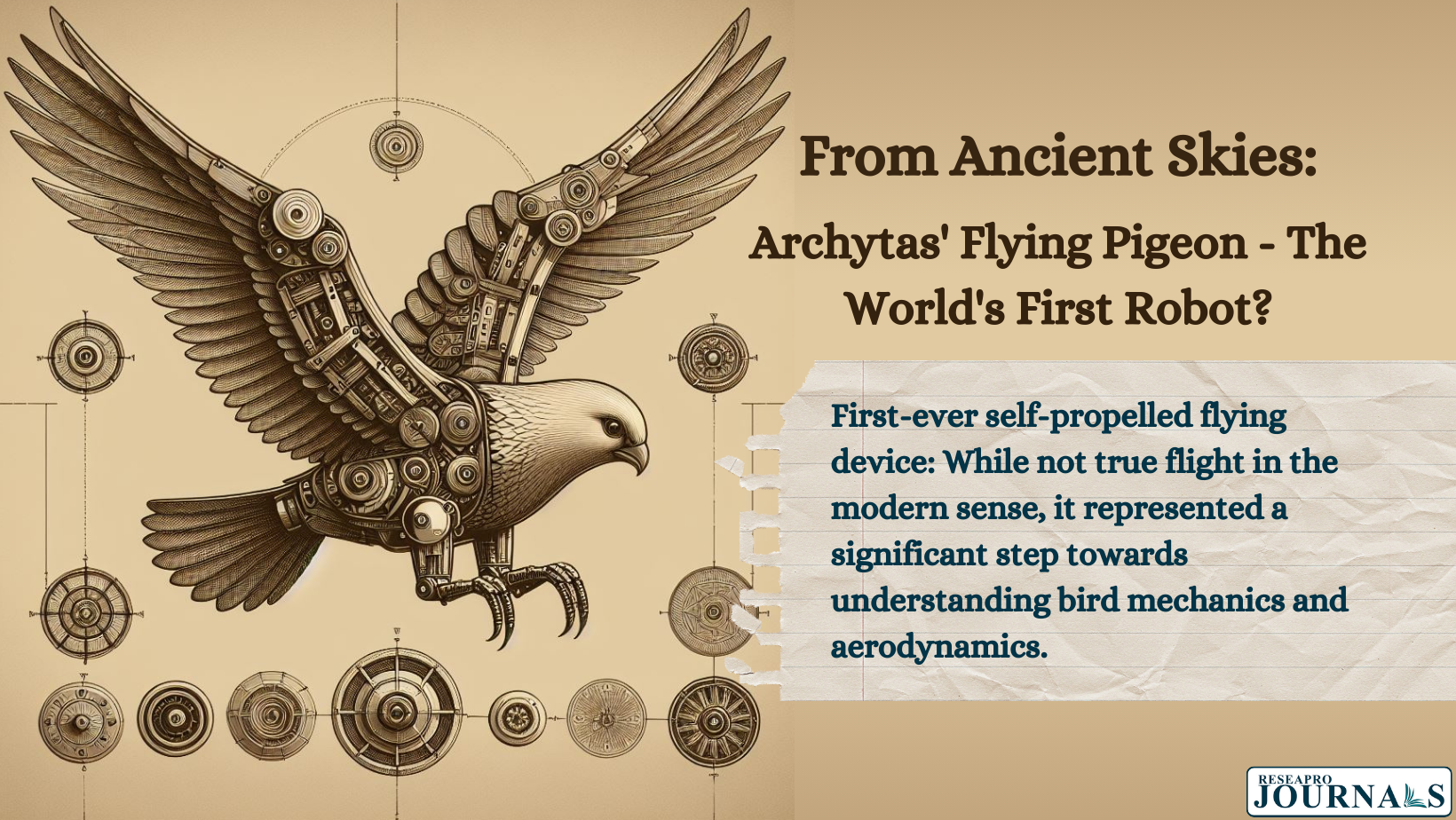|
Getting your Trinity Audio player ready...
|
Have you ever wondered where the seeds of robotics were sown? Look no further than Ancient Greece, where a brilliant mathematician named Archytas of Tarentum crafted a groundbreaking invention in the 5th century BC – the flying pigeon. This wooden automaton, powered by steam, wasn’t just a toy; it was a pioneering exploration of bird flight and a testament to the human mind’s boundless curiosity.
Taking Flight with Steam:
While details are shrouded in the mists of time, ancient texts describe Archytas’ flying pigeon as a marvel of ingenuity. This wooden bird, powered by an internal mechanism possibly fueled by steam, could flap its wings and take to the skies for short distances. Imagine the sight – a wooden creation, mimicking the grace of a real bird, soaring through the ancient Greek air!
Theories in Flight:
The exact method of propulsion remains a puzzle for historians and engineers. Some theories suggest compressed air pouches heated by steam might have pushed the wings, while others propose a steam-powered piston system driving the wing movement. There’s even a possibility of a pre-loaded counterweight system triggered by the “beak” to initiate flight.
More Than Just a Toy:
Archytas’ flying pigeon wasn’t just a whimsical invention; it was a significant step towards understanding the mechanics of bird flight. This early automaton laid the groundwork for future advancements in robotics and aviation, inspiring thinkers and inventors for centuries to come.
A Legacy that Takes Flight:
The flying pigeon may be lost to time, but its legacy endures. It serves as a reminder of the human spirit’s insatiable thirst for knowledge and innovation. From ancient Greece to the modern marvels of robotics, the pursuit of flight continues to inspire us to reach for the skies.




